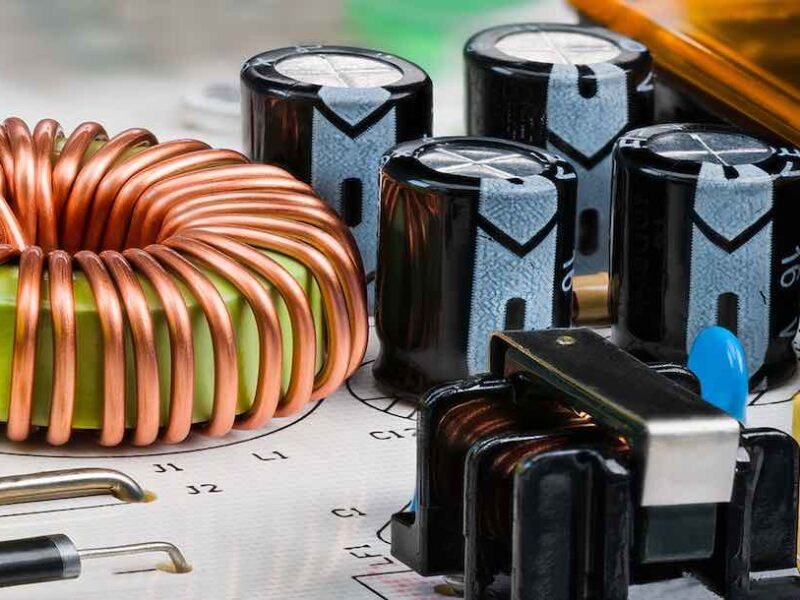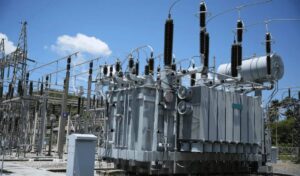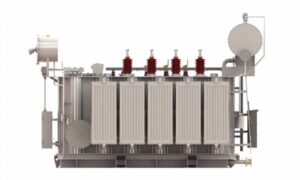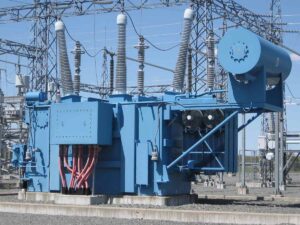
Power Transformer: Types, Working Principles, and Key Considerations
Transformers come in various forms and serve different functions — from power and test transformers to instrument and special-purpose types. Among them, power transformers play a vital role in electrical engineering, enabling the efficient transmission and distribution of electricity by adjusting voltage levels across the power grid. This article provides a clear overview of the types, components, operating principles, and key factors to consider when selecting a power transformer.
1. What is a Power Transformer?
A power transformer is an electrical device that transfers energy between two or more circuits through electromagnetic induction. It adjusts voltage levels — stepping it up for long-distance transmission and stepping it down for safe end-use in homes and industries.
At power generation stations, transformers raise voltage to reduce current, minimizing energy losses over transmission lines. Closer to consumption points, step-down transformers reduce voltage to safer levels. These functions are crucial to maintaining a stable and efficient power supply system.
2. Key Components of a Power Transformer
Power transformers are made up of several essential components that work in harmony to ensure efficient performance:
1) Core
The magnetic core, typically made of laminated silicon steel, serves as the pathway for magnetic flux. Its low reluctance design minimizes energy losses due to hysteresis and eddy currents, improving overall efficiency.
2) Windings
There are primary and secondary windings, usually made of copper or aluminum conductors. The number of turns in each winding determines the transformer’s voltage ratio. These windings are insulated to prevent short circuits and are carefully designed for thermal and mechanical performance.
3) Insulation
Insulation separates the windings and current-carrying parts, preventing electrical breakdown. Common materials include paper, synthetic fibers, and cotton. Insulation must withstand high voltages, temperatures, and mechanical stress.
4) Tap Changer
Tap changers adjust the number of turns in a winding to regulate the output voltage, compensating for load variations and system fluctuations.
5) Cooling System
Transformers generate heat during operation. Oil-immersed transformers use mineral oil to dissipate heat, while dry-type transformers rely on air (natural or forced). Cooling fans and radiators help maintain safe operating temperatures.
6) Explosion Relief Devices
In case of internal faults that increase pressure, explosion-proof diaphragms or pressure relief valves release excess gas and oil to prevent catastrophic failure.

3. Working Principle of Power Transformers
Power transformers operate based on Faraday’s law of electromagnetic induction. When an AC voltage is applied to the primary winding, it generates a varying magnetic field in the core. This field induces a voltage in the secondary winding.
The voltage transformation is achieved by varying the number of coil turns. More turns in the secondary winding increase voltage (step-up), while fewer turns reduce voltage (step-down).
4. Types of Power Transformers
Power transformers are categorized based on their function, configuration, and cooling method:
Step-Up Transformers
Increase voltage for transmission over long distances, minimizing losses.
Step-Down Transformers
Reduce voltage for local distribution to homes, industries, and businesses.
Single-Phase vs. Three-Phase Transformers
Single-phase transformers serve residential needs. Three-phase transformers, used in industrial and utility applications, provide more efficient and balanced power distribution.
Distribution vs. Power Transformers
Distribution transformers operate near load centers, stepping down voltage for end-users. Power transformers are used in transmission networks between generation and distribution points, handling high power levels.
Two-Winding vs. Autotransformers
Two-winding transformers have separate primary and secondary windings. Autotransformers share part of the winding and are more compact and efficient for small voltage differences.
Instrument Transformers
These include current transformers (CTs) and potential transformers (PTs), which reduce high currents and voltages to measurable levels for metering and protection.
Oil-Immersed vs. Dry-Type Transformers
Oil-cooled units are used for high-power applications. Dry-type transformers are air-cooled and suitable for indoor or fire-sensitive environments.
Toroidal Core Transformers
These have a donut-shaped core, reducing leakage inductance and offering high efficiency in compact designs, though they are costlier to manufacture.

5. Key Factors to Consider When Selecting a Transformer
To ensure safety, reliability, and performance, consider the following:
- Rated Voltage: Match primary and secondary voltage levels to the application.
- Load Capacity: Choose a transformer with appropriate power rating to handle peak loads.
- Efficiency: High-efficiency models reduce operational losses.
- Size and Mounting: Ensure the transformer fits the available space and complies with installation constraints.
- Cooling Method: Select a suitable cooling system based on environment and load.
- Compliance: Ensure adherence to local standards and certifications (e.g., IEC, ANSI, GOST).
- Maintenance Support: Check for ease of servicing and availability of spare parts and technical assistance.
6. Maintenance Best Practices
Transformers require regular upkeep to ensure safe and long-term operation:
- Use Quality Transformer Oil: Ensure high dielectric strength and thermal stability.
- Routine Inspections: Check for leaks, insulation degradation, and abnormal temperatures.
- Temperature Monitoring: Use sensors to detect overheating and prevent failures.
- Protective Devices: Install and maintain overcurrent and short-circuit protection systems.
- Fire Safety: Maintain clearance from flammable materials and use fire-resistant designs.
Regular maintenance greatly reduces the risk of failure, extending transformer lifespan and ensuring operational reliability.

7. Conclusion
Power transformers are foundational to modern electrical infrastructure. Understanding their operation, classifications, and selection criteria is essential for building robust, safe, and efficient power systems. With proper design, application, and maintenance, transformers can deliver decades of reliable service across a wide range of industrial and utility environments.
Professiona Switchgear supplier and manufacturer
- Zhejiang GONGSHUN Electrical Co.,Ltd (electricgs.com), Our company was founded in the late 1990s, specializing in the production of inflatable cabinets, SF6 inflatable cabinets, and various high and low voltage complete sets of electrical equipment. It has multiple subsidiaries under its jurisdiction, including high-voltage load switch branch, high-voltage circuit breaker branch, high-voltage fuse branch, and technology development branch.Our technical expertise, comprehensive product portfolio and long-term rich experience are helping many customers in need to solve their power problems. We’re happy to help at any time. Whether you need application product advice or technical assistance, our global service team is committed to providing you with the right support. For more technical information about medium voltage earthing switch, feel free to contact us, send an email to gongshun@electric-cn.com
- Our company specializes in producing 12KV-40.5KV series high-voltage electrical products: FZN58, FLN48, FLN36, FZRN25, FZN21, FN18, ZFN16, FN12, FN8, FN7, FN5, XRNT, XRNP, VS1, ZN28, ZW8, ZW32, JN15, GN19, GN22, GN24, GN30, CLXGN15-12, HXGN □ -12, DXG-12 (L), DFW □ -12 high-voltage cable branch box, CLXGN □ -12 (SF6) series inflatable cabinet 12KV and 35KV cable accessories, etc; CLVXP-12 indoor AC high voltage fixed switchgear, CL-SIS-12 compact solid insulated ring main unit, professional assembly Schneider SC6 (SF6) series load switchgear, ABB produced SFG (SF6) series load switchgear and other series products; Distribution and agency of high-voltage load switches and inflatable cabinets produced by Schneider Electric and ABB; Siemens produces the 3AJ1 series of indoor medium voltage vacuum circuit breakers and other related products. The company has a complete range of products and has been operating safely on domestic and international power grids for a long time, receiving unanimous praise from both new and old users. Among them, multiple products such as FZRN25, FN12, FLN36-12, XRNT-12 have been exported to various countries and regions in East Asia, South Asia, Southeast Asia, Africa, and the United States.
